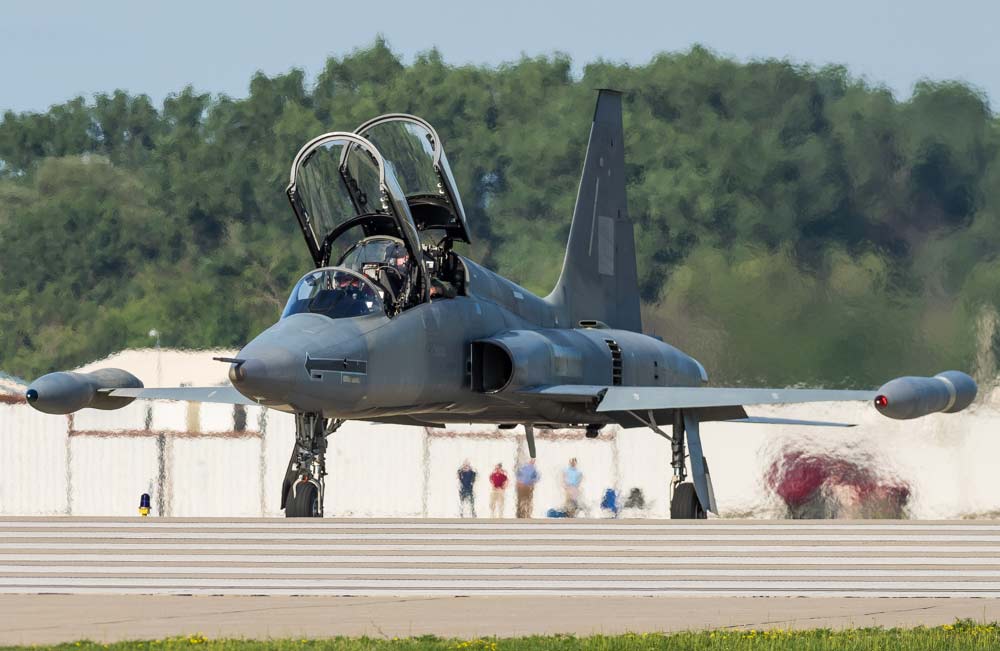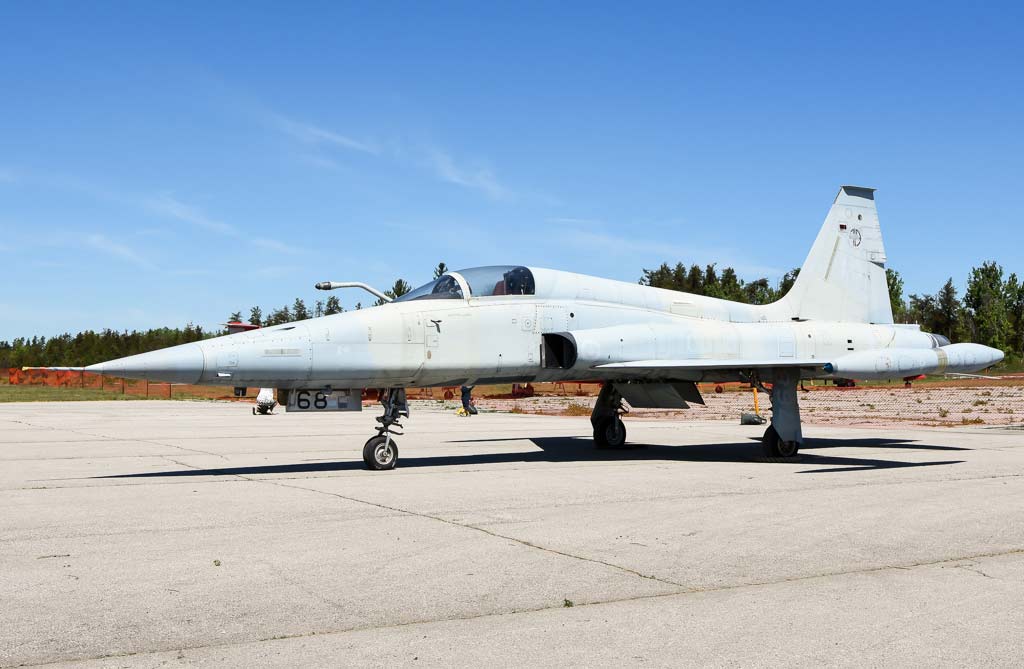The Canadair CF-5, also known as CF-116, is a Canadian variant of the Northrop F-5 Freedom Fighter, adapted for improved short-field performance and equipped with enhanced avionics and Canadian-built engines.
In brief
The CF-5 Freedom Fighter, a light, supersonic jet, was Canada’s tactical choice during the Cold War for its air forces. Modified from the American Northrop F-5, it featured upgrades like air-to-air refueling, advanced avionics, and more potent Orenda engines. Its adaptability included a reconnaissance version with a camera-fitted nose, showcasing its versatility beyond a combat aircraft. Primarily used for pilot training and NATO missions, it was phased out by 1995 but left a legacy of affordability and efficiency in military aviation.
The Canadair CF-5, a customized version of the Northrop F-5, played a crucial role in Canada’s military aviation, aligning with the era’s needs for cost-effective yet capable fighter aircraft. Tailored to meet specific operational requirements, it underscored innovation in adapting foreign designs to national interests.

History of the Development
Developed during the Cold War, the CF-5 addressed the Royal Canadian Air Force’s (RCAF) need for a modern yet affordable fighter jet. The aircraft’s design was a response to the escalating costs of military equipment, offering a balance between performance and operational economy. Canadair’s manufacturing of the CF-5 underlined Canada’s capability in producing advanced fighters, marking the last fighter manufactured in the country. The first CF-5 flew in 1959, and it was extensively used by the Canadian Forces, especially for NATO missions and pilot training for the CF-18.
Design
The CF-5 incorporated significant modifications from the original F-5 design, including a refueling probe, upgraded avionics, and more powerful engines provided by Orenda. These enhancements were pivotal for improving its operational range, mission versatility, and overall combat capability. The aircraft was noted for its short takeoff capability, crucial for operations from forward airfields.
Performance
Equipped with two Orenda-built GE J85-15 turbojets, the CF-5 boasted impressive specifications: a top speed of Mach 1.3, a service ceiling of 41,000 feet, and a max takeoff weight of 20,390 pounds. Its combat prowess was complemented by a loadout including cannons, rockets, missiles, and bombs, enabling versatile operational roles from air superiority to ground attack.
Variants
The CF-5 family included the single-seat CF-5A fighter and the CF-5D two-seat trainer, with the CF-5A(R) variant being a reconnaissance-focused model featuring a camera-equipped nose for intelligence-gathering missions.

Military Use and Combat
The Canadair CF-5, a Canadian adaptation of the Northrop F-5 Freedom Fighter, served primarily within the Royal Canadian Air Force (RCAF) and saw varied use in several other countries. This section delves into the military applications, combat roles, and the operational history of the CF-5, emphasizing its contribution to NATO missions and its utility in international conflicts.
NATO Commitments and Canadian Operations
The CF-5 was integral to Canada’s commitment to NATO during the Cold War. Initially envisioned to be deployed in Europe as part of a rapid deployment force, budgetary constraints relegated the CF-5 to a more limited role. It was stationed in Canada but remained on standby for quick deployment to Central Europe or Norway if hostilities had erupted. Throughout the Cold War, CF-5s were deployed to Europe for exercises, showcasing their rapid deployment capability and operational flexibility. They participated in various NATO exercises, demonstrating the aircraft’s reconnaissance and tactical capabilities, despite never engaging in actual combat during these times.
The aircraft’s versatility was also highlighted in its adaptation for reconnaissance missions. The CF-5Rs, equipped with photographic equipment, took part in NATO reconnaissance exercises, with Canadian pilots winning accolades for their performance. This recon variant underscores the CF-5’s adaptability to various mission profiles, extending its utility beyond a mere fighter or trainer aircraft.
International Service and Combat Roles
Globally, the CF-5 found service in the air forces of countries like Venezuela, where it replaced older, slower aircraft, bringing a supersonic capability to the Venezuelan Air Force for the first time. The aircraft were engaged in modernization efforts and were equipped with weapons capable of delivering conventional munitions, showcasing the CF-5’s flexibility as a light attack aircraft. Despite the lack of detailed combat records, the CF-5’s service in Venezuela represents a significant period where the aircraft was tested in a variety of operational conditions, including high-tension scenarios that could have escalated into larger conflicts.
In other nations, such as the Netherlands and later Turkey and Greece, the CF-5s were employed in roles that ranged from training to operational duties, reflecting the aircraft’s widespread acceptance and versatility. These deployments further attest to the CF-5’s reliability and effectiveness in various international settings, enhancing its reputation as a cost-effective and capable military aircraft.
Comparative Analysis and Legacy
When compared to contemporary aircraft, the CF-5 was notable for its cost-effectiveness, ease of maintenance, and operational versatility. It was not the most advanced fighter of its time but offered a balance of performance, cost, and operational flexibility that was particularly appealing for smaller air forces or countries with specific defense needs. Its legacy is marked by its extended service life, contributions to NATO’s air defense posture during the Cold War, and its role in the training and operational transition of pilots, especially in preparation for more advanced fighters like the CF-18 Hornet.
The Canadair CF-5 Freedom Fighter, despite its limited combat history, played a pivotal role in military aviation during its service period. Its impact was felt not only in Canada but also in the various countries that operated the aircraft, leaving a legacy of a versatile, reliable, and cost-effective military jet that served various roles ranging from air defense to training and reconnaissance.
The Canadair CF-5 Freedom Fighter epitomizes a successful adaptation of a versatile light fighter to meet specific national defense needs. Its operational legacy in the Canadian Forces and abroad highlights its significance as a reliable, cost-effective, and versatile military aircraft, tailored for both combat and training roles, encapsulating a significant era in Canadian military aviation history.
Back to the Fighter Jet section.